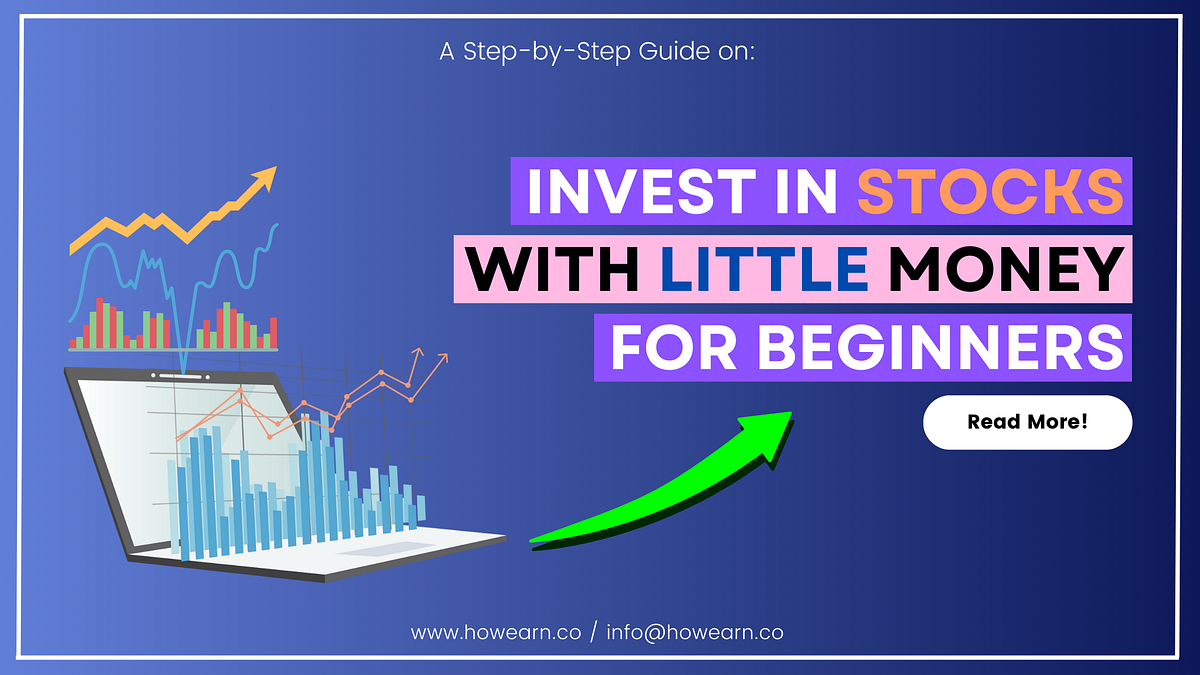Many, or all, of the products featured on this page are from our advertising partners who compensate us when you take certain actions on our website or click to take an action on their website. However, this does not influence our evaluations. Our opinions are our own. Here is a list of our partners and heres how we make money.
The investing information provided on this page is for educational purposes only. NerdWallet, Inc. does not offer advisory or brokerage services, nor does it recommend or advise investors to buy or sell particular stocks, securities or other investments.
Hey there! I’ve been where you are – staring at my bank account with just a few dollars to spare but eager to jump into the stock market. The good news? You don’t need thousands of dollars to start investing anymore. Today, I’m gonna share everything I’ve learned about getting started in stocks when you’re on a tight budget.
The Truth About Starting Small
Let’s be real – when I first wanted to invest, I thought I needed at least $1,000 to even get started. Boy was I wrong! The investing world has changed dramatically making it possible for practically anyone to begin building wealth through stocks even with just a few bucks.
As Voya’s investing guide points out, “the reality is that there are a number of ways to start investing with small dollars.” While there are always market risks involved (nothing’s guaranteed!) having limited funds shouldn’t stop you from getting started.
7 Practical Ways to Invest With Limited Funds
1. Take Advantage of Workplace Retirement Plans
If your employer offers a 401(k), 403(b) or 457 plan this is honestly one of the easiest entry points into investing. Here’s why
- You can start with super small contributions (even just 1-2% of your paycheck)
- Many employers match a percentage of what you contribute (FREE MONEY!)
- Contributions come out pre-tax, reducing your taxable income
- The power of compound interest works in your favor over time
I started by contributing just 2% of my income to my workplace plan, and it barely impacted my take-home pay but got me in the game!
2. Open an IRA (Individual Retirement Account)
If you don’t have access to a workplace plan (or want additional options), IRAs are fantastic for small investors:
- Many IRAs have $0 account minimums to get started
- They offer tax advantages (depending on whether you choose Traditional or Roth)
- You get way more investment options than typical workplace plans
- You control your own investment choices
I personally love Roth IRAs for beginners because your money grows tax-free!
3. Explore Index Funds and ETFs
These are my personal favorites for beginners with limited funds:
- Index funds track specific market indexes (like the S&P 500)
- ETFs (Exchange-Traded Funds) are similar but trade like stocks
- Many have very low minimum investments
- They provide instant diversification across many companies
- Often have lower fees than actively managed funds
As Fidelity explains, “They’re easy to buy, and a fund manager manages them for you.” This makes them perfect for beginners who don’t want to pick individual stocks.
4. Try Fractional Investing
This is a game-changer for small investors! Fractional investing lets you:
- Buy portions of expensive stocks (like Amazon or Google) for as little as $1
- Build a diversified portfolio even with limited funds
- Invest in companies you believe in without waiting to save up hundreds
- Start right away rather than waiting to accumulate larger sums
I remember being so excited when I bought my first $5 worth of Apple stock – it felt amazing to own a tiny piece of a company I believed in!
5. Consider Lower-Risk Options When Appropriate
If stock market volatility makes you nervous:
- CDs (Certificates of Deposit) offer fixed returns over specific time periods
- Bonds are essentially loans to companies or governments that pay interest
- These typically offer lower returns but with reduced risk
- They can be part of a balanced portfolio even with small amounts
6. Use Micro-Investing Apps
These specialized apps make investing spare change possible:
- Some automatically round up purchases and invest the difference
- Many offer $0 minimums to get started
- They often provide pre-built diversified portfolios
- Perfect for completely hands-off investing
I started with just rounding up my coffee purchases and grocery runs – those pennies really do add up over time!
7. Take Advantage of Direct Indexing
This newer option is becoming more accessible to small investors:
- Similar to index funds but with more customization
- Some platforms now offer this with small minimums
- Allows for more tax efficiency than traditional funds
- Provides personalized exposure to markets
The Magic of Compound Interest
This is seriously the small investor’s superpower! As Voya explains, “over time, not only can your initial investment earn interest, that interest will earn interest, too. It builds on itself.”
Here’s a simple example:
- Invest just $50 monthly starting at age 25
- Assuming 7% average annual returns
- By age 65, you’d have over $120,000!
The earlier you start, the more powerful compound interest becomes, even with tiny contributions.
Overcoming Common Investing Barriers
“I don’t know where to start”
Start with simple, low-cost index funds through a robo-advisor. They’ll build a portfolio based on your goals and risk tolerance.
“I don’t have enough money”
Remember: many platforms now offer $0 minimums and fractional shares starting at $1.
“I’m afraid of losing money”
This is normal! Start with more conservative investments or educate yourself more through Fidelity’s learning resources for beginners.
“Investing is too complicated”
It can seem that way, but tools like target-date funds or robo-advisors make it incredibly simple.
Practical Steps to Get Started Today
- Determine how much you can invest – Even $5-10 per week is a great start
- Choose your investment account – Workplace plan, IRA, or standard brokerage account
- Select a platform – Traditional brokers like Fidelity or newer apps with low minimums
- Pick your first investments – Broadly diversified index funds are perfect for beginners
- Set up automatic contributions – This helps with consistency and dollar-cost averaging
Smart Habits for Small Investors
- Stay consistent – Regular small investments beat occasional large ones
- Reinvest dividends – Let your earnings generate more earnings
- Keep learning – Resources like Fidelity’s investing basics guides are gold
- Diversify appropriately – Don’t put all your money in one stock or sector
- Be patient – Small investments need time to grow
- Rebalance periodically – Keep your portfolio aligned with your goals
My Personal Experience
When I first started, I literally had $25 to invest. I felt silly even trying, but I opened an account with a broker that offered fractional shares and bought tiny pieces of a total market index fund.
Five years later, those small weekly contributions have grown into a respectable portfolio. The hardest part was just getting started!
Common Mistakes to Avoid
- Trying to time the market – Even professionals can’t do this reliably
- Checking your investments daily – This leads to emotional decisions
- Paying high fees – These eat into your returns, especially harmful for small investors
- Ignoring tax-advantaged accounts – IRAs and 401(k)s offer valuable benefits
- Getting investing advice from social media – Be cautious about “hot tips”
Final Thoughts
The most important thing I’ve learned is that investing with small amounts is 100% valid and valuable. Don’t let anyone make you feel like you need thousands to get started.
As the Voya guide wisely states: “It’s not about how much you start with, it’s about getting started in the first place and staying consistent.”
Your future self will thank you for starting today, even if it’s just with a few dollars. The journey to building wealth is more about consistency and time than initial capital.
Have you started investing with a small amount? What methods worked best for you? I’d love to hear about your experiences in the comments!

How to invest in stocks in 7 steps




Investing for Beginners – How I Make Millions from Stocks (Full Guide)
FAQ
How much do I need to invest in stocks to make $1000 a month?
You’ll need a portfolio worth about $300,000 generating a 4% dividend yield to earn $1,000 in monthly passive income. Building a diversified collection of 20 to 30 dividend stocks across different sectors helps protect your income.
Can I invest in stocks with only $100?
How to turn $1000 into $5000 in a month?
- Stock Market Trading. …
- Cryptocurrency Investments. …
- Starting an Online Business. …
- Affiliate Marketing. …
- Offering a Digital Service. …
- Selling Stock Photos and Videos. …
- Launching an Online Course. …
- Evaluate Your Initial Investment.
What is the 3-5-7 rule in stocks?
